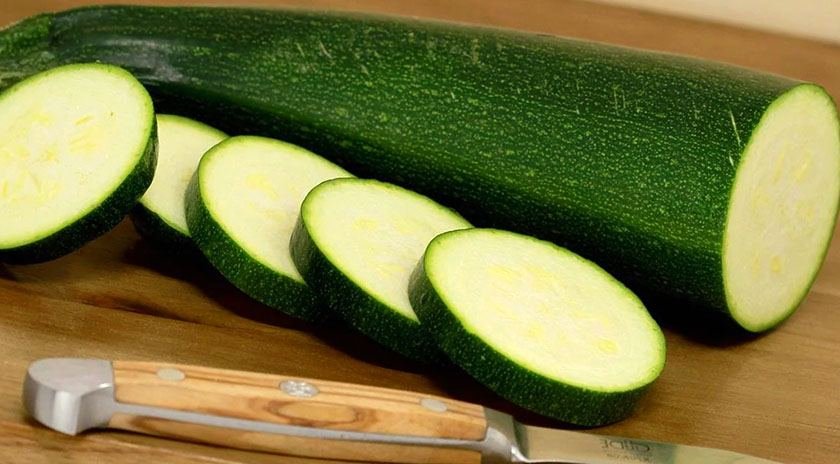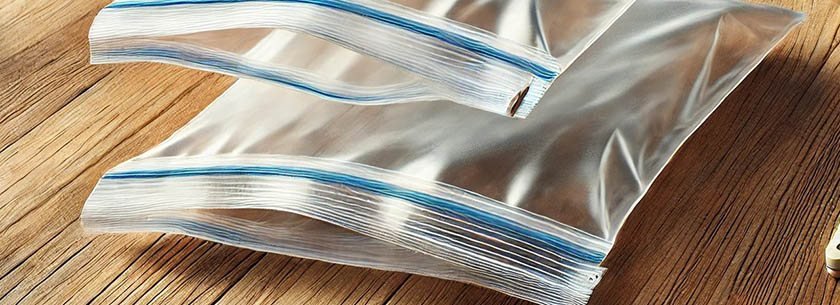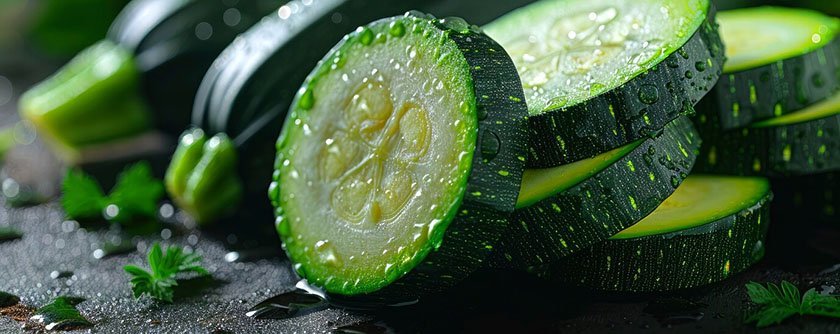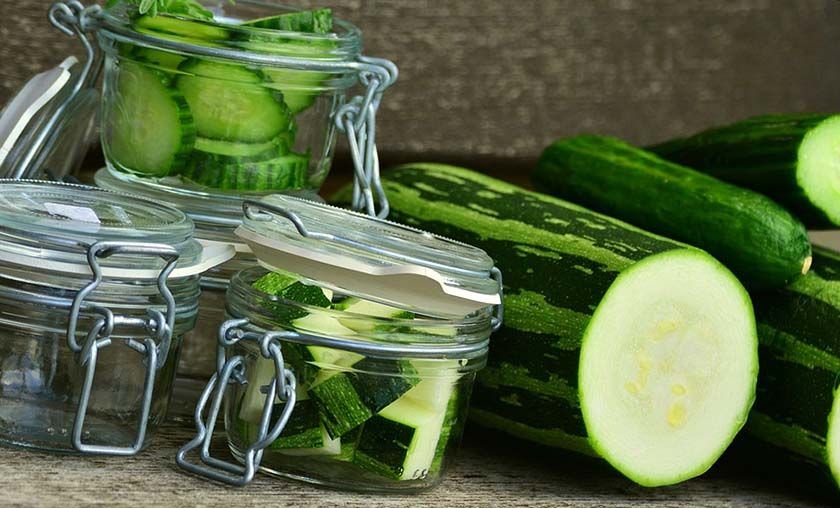Freezing zucchini is an effective method for preserving this versatile vegetable, allowing individuals to enjoy its fresh flavor and nutritional benefits throughout the year.
This article examines the rationale behind freezing zucchini as a prudent choice, outlines the essential preparation steps, and details the optimal methods for freezing various forms of zucchini, including slices, grated zucchini, puree, and noodles.
Furthermore, the article offers guidance on the best way to freeze zucchini, along with tips on proper storage and thawing, ensuring you’re always prepared to create a delectable dish.
Why Freeze Zucchini?
Freezing zucchini is an effective method for long-term storage, enabling individuals to preserve both the nutritional value and flavor of this versatile summer squash.
This technique allows for the enjoyment of garden vegetables throughout the year while minimizing food waste and enhancing meal preparation capabilities with freezer-friendly options.
The freezing process effectively retains nutrients, making it an advantageous choice for health-conscious individuals looking to incorporate seasonal produce into their diets.
Given that zucchini is low in calories yet rich in essential vitamins and minerals, freezing it helps maintain these benefits for future meals.
How to Prepare Zucchini for Freezing?
Preparing zucchini for freezing is essential to ensure optimal preservation of flavor and retention of nutrients. The process generally involves several key steps:
- washing;
- drying;
- blanching;
- cutting the zucchini into the preferred shapes, whether sliced or shredded.
Proper preparation enhances freezing efficiency and aids in moisture control, thereby preventing the formation of ice crystals that can compromise food quality. By adhering to these steps, one can create homemade frozen zucchini that retains its taste and nutritional value for various recipes.
Washing and Drying
The initial step in preparing zucchini for freezing involves a thorough washing process to eliminate any dirt, pesticides, or contaminants, thereby ensuring food safety. It is advisable to rinse the zucchini under running water, utilizing a vegetable brush for any stubborn residues.
Following the washing procedure, it is imperative to dry the zucchini to prevent excess moisture during freezing, as this can lead to the formation of ice crystals and adversely affect the vegetable’s quality. Proper handling at this stage is crucial for maintaining the integrity of garden vegetables once they are frozen.
Adhering to hygiene practices throughout the process is crucial, as it reduces the risks linked to bacteria and pathogens often found on fresh produce, especially when following the best way to freeze zucchini.
The impact of moisture on frozen vegetables should not be underestimated – excess water can result in undesirable texture changes and dilute flavors upon thawing.
Therefore, ensuring that the zucchini is thoroughly dried before packaging can significantly enhance its texture and taste during cooking.
By implementing these fundamental washing and drying techniques, individuals can contribute to safer food storage while preserving the delightful essence of their fresh harvest.
Cutting and Slicing
 Once the zucchini has been thoroughly washed and dried, the subsequent step involves cutting it into appropriate sizes, depending on whether one prefers slicing for quick zucchini dishes or shredding for soups and muffins.
Once the zucchini has been thoroughly washed and dried, the subsequent step involves cutting it into appropriate sizes, depending on whether one prefers slicing for quick zucchini dishes or shredding for soups and muffins.
The method of cutting the zucchini can significantly impact meal preparation and cooking techniques, as different shapes may be more suitable for specific recipes. By ensuring uniform cuts, one can promote even freezing and facilitate the defrosting process for future culinary endeavors.
For example, thicker slices are ideal for grilling or roasting, whereas smaller pieces may integrate seamlessly into stir-fries or casseroles. Shredded zucchini is particularly versatile, making it suitable for incorporation into baked goods, enhancing moisture in recipes, or serving as a nutritious base for various meals.
It is advisable to consider briefly blanching the zucchini prior to freezing, as this technique can enhance flavor retention and preserve vibrant color. With these cutting techniques and their implications in mind, meal preparation becomes significantly more manageable, allowing for the quick assembly of nutritious dishes directly from the freezer.
Blanching
Blanching is an essential step in preparing zucchini for freezing, as it effectively preserves its vibrant color, texture, and nutritional value. During the blanching process, zucchini is briefly immersed in boiling water and then rapidly cooled in ice water.
This method halts enzyme activity that can lead to the degradation of flavor and nutrients over time. Consequently, when cooking zucchini from frozen, it retains its fresh taste and beneficial properties, making it an ideal choice for individuals seeking to incorporate healthy meals into their diets.
The blanching duration and temperature must be adjusted according to the size and thickness of the zucchini pieces. For cubes measuring approximately half an inch, a brief immersion of 1-2 minutes in boiling water is adequate, whereas thicker slices may require up to 3 minutes to achieve the desired outcome.
Subsequently, the rapid cooling in ice water is crucial when considering the best way to freeze zucchini, as it stops the cooking process and locks in nutrients, preserving both flavor and crunchiness.
This meticulous control over time and temperature during the blanching process enables the zucchini to maintain its vitamins, such as A and C, while ensuring that culinary applications remain flavorful and appealing.
Cooling and Draining
After blanching, it is essential to cool and drain the zucchini properly to ensure effective food preservation and moisture control. Transferring the blanched zucchini to an ice bath immediately halts the cooking process, thereby preserving its texture and color.
Once cooled, thoroughly draining the zucchini eliminates excess water that could lead to freezer burn or the formation of ice crystals, which can compromise the quality of the stored vegetables. Proper cooling and draining are crucial for maintaining the integrity of frozen zucchini over time.
These steps not only enhance the flavor profile but also prevent potential spoilage. Inadequate cooling may allow residual heat to continue cooking the zucchini, resulting in a mushy texture that detracts from its overall appeal.
Additionally, failing to drain the zucchini effectively creates an environment conducive to the growth of ice crystals, which can damage the vegetable’s cellular structure. This lack of proper moisture control ultimately diminishes the taste and nutritional value, rendering the effort of blanching less effective.
Therefore, adhering to the cooling and draining phases is essential for ensuring a delightful culinary experience long after the initial preparation.
What is the Best Way to Freeze Zucchini?
Understanding the optimal methods for freezing zucchini is essential to maintain its quality and flavor over extended periods. Several effective freezing techniques are available, including the use of freezer bags, vacuum sealing, or storing the zucchini in airtight containers.
Each method presents its advantages and disadvantages, with vacuum sealing being particularly effective for maximizing space and preventing freezer burn. Additionally, proper organization within the freezer is crucial for ensuring easy access to homemade frozen zucchini for future culinary endeavors.
Freezing Zucchini Slices
Freezing zucchini slices is a straightforward process that facilitates efficient meal preparation for the future.
Taking the time to properly freeze these vegetables is crucial for maintaining their quality and flavor when cooked at a later time. After slicing, the best way to freeze zucchini is to arrange the rounds in a single layer on a baking sheet, ensuring they are not overcrowded to promote even freezing.
Once the slices are thoroughly frozen, they can be conveniently stored in bags in appropriate portions, making them ideal for incorporation into stir-fries, soups, or salads.
This method not only simplifies the cooking process but also introduces a variety of quick recipes, allowing for the enjoyment of summer flavors during the winter months.
Freezing Grated Zucchini
Freezing grated zucchini is an excellent strategy for individuals who appreciate baking or cooking with this versatile vegetable in large quantities.
To begin, grate the zucchini and place it in a clean kitchen towel to remove excess moisture. This step is crucial for ensuring better texture and flavor retention after freezing.
Portion the grated zucchini into freezer bags or airtight containers, making it convenient to access for recipes such as zucchini muffins, fritters, or vegetable casseroles. This method facilitates the quick integration of zucchini into various dishes directly from the freezer, thereby promoting efficient meal preparation.
By removing moisture, the grated zucchini maintains its integrity, making it an ideal ingredient for summer squash breads or even healthy pancakes. Pre-portioning the zucchini simplifies the scaling of recipes and minimizes waste.
Whether one is preparing a comforting zucchini lasagna or a light stir-fry, having this ingredient readily available enhances the cooking process.
The versatility of zucchini allows it to enrich a wide range of dishes while also providing nutritional benefits, offering cooks numerous opportunities to incorporate it into their meals throughout the year.
Freezing Zucchini Puree
Freezing zucchini puree is an excellent method for preserving the vegetable’s flavor and nutritional benefits while facilitating its incorporation into a variety of nutritious meals. To prepare zucchini puree, one should cook, blend, and strain the zucchini to achieve a smooth consistency.
The process begins with washing and chopping the zucchini into uniform pieces, followed by steaming or boiling until tender. After cooking, the zucchini should be blended until it reaches a silky texture. If a smoother consistency is desired, it can be strained through a fine sieve.
For those aiming to enhance their dishes with this versatile puree, the best way to freeze zucchini is to incorporate herbs or spices during the blending process to provide an additional flavor boost.
Once the desired consistency is obtained, the mixture should be portion into freezer-safe containers, with proper labeling for future use.
Zucchini puree can be added to pasta dishes, pancakes, or healthy dips, thereby enhancing nutrition without compromising taste. This makes it a valuable addition to any meal plan.
Freezing Zucchini Noodles
Freezing zucchini noodles, commonly known as ‘zoodles’, serves as an efficient method for preparing quick and nutritious meals during busy periods. The process begins by spiralizing the zucchini into noodle shapes, followed by a brief blanching to preserve both texture and nutrients.
This blanching step is essential, as it halts enzyme activity that may lead to a decline in flavor, color, and texture. After immersing the zoodles in an ice bath to halt cooking, they should be arranged on a baking sheet.
This preliminary freezing step prevents the strands from clumping together, ensuring that they can be easily portioned for various culinary applications when needed.
Storing the zoodles in airtight freezer bags allows for convenient access, making it simple to incorporate them into stir-fries or quick sautés. This method facilitates the preparation of delicious, low-carb meals without the necessity for extensive preparation time.
How to Store Frozen Zucchini?
 Proper storage of frozen zucchini is vital for maintaining food quality and ensuring its safety for consumption over time. It is recommended to use freezer bags or airtight containers to minimize the risk of freezer burn and preserve the vegetable’s flavor.
Proper storage of frozen zucchini is vital for maintaining food quality and ensuring its safety for consumption over time. It is recommended to use freezer bags or airtight containers to minimize the risk of freezer burn and preserve the vegetable’s flavor.
Furthermore, labeling and dating each container is essential, as this practice allows for effective tracking of the freezing duration, ensuring that the zucchini is used within its peak quality period.
By organizing the freezer efficiently, one can easily access frozen zucchini for a variety of meals.
Using Freezer Bags or Containers
When storing frozen zucchini, it is essential to utilize freezer bags or airtight containers to ensure effective food preservation and flavor retention.
Freezer bags offer flexible storage options, allowing for the removal of excess air, while airtight containers provide robust protection against freezer burn. Both methods enhance freezer organization and guarantee that the zucchini maintains its quality during storage.
Selecting the appropriate storage technique can significantly influence how well the zucchini retains its nutrients and flavors over an extended period.
These storage solutions not only prevent the zucchini from becoming soggy or losing its vibrant color, but they also mitigate the absorption of unwanted odors.
Maintaining the integrity of the vegetables during the freezing process can extend their shelf life, allowing for the enjoyment of garden-fresh taste well beyond the growing season.
The convenience offered by both methods facilitates meal preparation – when it is time to cook, the zucchini will remain firm and flavorful, ready to enhance any dish.
Ultimately, mastering these storage techniques will enable individuals to appreciate the rich taste and nutritional benefits of zucchini long after it has been harvested.
Labeling and Dating
Labeling and dating frozen zucchini is a crucial practice for ensuring food safety and maintaining quality. By clearly marking each bag or container, individuals can easily monitor the duration of freezing, which aids in determining the optimal time for usage to preserve flavor and nutrient integrity.
This method also facilitates the organization of the freezer, allowing for convenient access to ingredients necessary for preparing zucchini dishes or meal prep without the need to rummage through the entire freezer.
Incorporating essential information such as the freezing date, type of food, and portion sizes significantly enhances kitchen efficiency.
By including these details, confusion is minimized, and food waste is reduced, as items like zucchini are more likely to be utilized before they lose taste and texture, making it the best way to freeze zucchini effectively.
A well-structured system can prevent cross-contamination and ensure that older items are consumed first, thereby promoting a safer environment for food storage. This straightforward yet effective habit not only simplifies meal planning but also positively impacts overall food safety and quality.
How Long Can Frozen Zucchini Last?
Frozen zucchini can maintain optimal quality for approximately 10 to 12 months when stored correctly – however, it remains safe for consumption beyond this timeframe if kept at a consistent freezing temperature.
Several factors, including the initial quality of the zucchini, the preparation method employed, and the effectiveness of storage techniques, influence the longevity of frozen zucchini.
To maximize its shelf life, it is essential to ensure proper organization within the freezer and to adhere to best practices for freezing.
While freezing is an effective method for extending the life of this versatile vegetable, various variables significantly affect its overall freshness. For example, blanching zucchinis prior to freezing helps them retain their color and nutrients, thereby enhancing their quality over time.
Furthermore, the type of packaging used – whether airtight containers or heavy-duty freezer bags – plays a crucial role in minimizing the development of freezer burn, a condition that can compromise both texture and taste. Consequently, being attentive to these factors will contribute to enjoying frozen zucchini at its peak quality.
How to Thaw Frozen Zucchini?
Properly thawing frozen zucchini is essential for maintaining its texture and flavor, and there are several effective defrosting methods to consider. The optimal method largely depends on the intended use of the zucchini.
For instance, if quick meal preparation is required, cooking the zucchini directly from frozen is a feasible option. Alternatively, one may choose to thaw it in the refrigerator overnight, employ a cold water bath for a more expedited defrosting process, or utilize the microwave for immediate cooking needs.
Familiarity with these defrosting methods can enhance the utilization of frozen zucchini in various culinary applications.
Thawing in the Refrigerator
Thawing frozen zucchini in the refrigerator is one of the safest methods available, as it maintains a consistent, cool temperature throughout the process. This approach facilitates gradual defrosting, which helps preserve both the texture and flavor of the zucchini.
For the best way to freeze zucchini, it’s advisable to transfer the desired amount of frozen zucchini to the refrigerator the night before it’s needed, ensuring both food safety and maintaining quality for various cooking techniques or recipes.
By employing this method, one not only mitigates the risk of bacterial growth that can occur at elevated temperatures but also retains the nutritional benefits that zucchini provides.
When thawed properly, the vegetable maintains its moisture content, resulting in a more enjoyable texture, whether it is being used in a stir-fry, roasted as a savory side dish, or blended into a hearty soup.
This careful approach enhances the overall cooking experience, ensuring that each dish highlights the natural flavors of the zucchini while delivering consistent results. Furthermore, utilizing refrigerator thawing aligns seamlessly with numerous culinary practices aimed at maximizing taste and ensuring safety.
Thawing in Cold Water
 Thawing frozen zucchini in cold water is a swift and effective method, particularly when time is limited. To implement this technique, place the sealed freezer bag containing the zucchini in a bowl of cold water, ensuring that it is fully submerged.
Thawing frozen zucchini in cold water is a swift and effective method, particularly when time is limited. To implement this technique, place the sealed freezer bag containing the zucchini in a bowl of cold water, ensuring that it is fully submerged.
It is advisable to change the water every 30 minutes to maintain a consistent temperature, allowing the zucchini to thaw while also controlling moisture levels.
This method is especially beneficial for those aiming to preserve the quality of the zucchini for immediate culinary applications such as sautéing or incorporating into soups.
Utilizing this technique not only preserves the texture of the zucchini but also prevents excess water from accumulating around it, which is essential for avoiding sogginess in various dishes.
As the zucchini thaws, it is important to consider its intended use in the meal. For example, quick stir-fries or casseroles greatly benefit from this method, as the zucchini retains its shape and flavor, thereby enhancing the overall quality of the dish.
This approach facilitates the expeditious preparation of meals, making weeknight dinners less daunting and enabling a variety of healthy options to be presented in a timely manner.
Thawing in the Microwave
Thawing frozen zucchini in the microwave represents the most efficient method for those requiring a swift meal preparation.
By utilizing the defrost setting, one can thaw the zucchini without subjecting it to cooking, thereby preparing it for immediate incorporation into preferred recipes. It is essential to monitor the zucchini closely throughout this process to prevent any premature cooking, which may compromise its texture.
This rapid defrosting technique is particularly advantageous for meal preparation when time constraints are present. Plus its expediency, the best way to freeze zucchini also aids in preserving its nutritional value, making it easy to incorporate into a variety of dishes, such as stir-fries, soups, or salads.
It is imperative, however, to place the zucchini in a microwave-safe container and to cut it into smaller pieces to ensure even thawing. One should also check for any icy spots, as these may indicate that certain areas remain frozen.
Employing the microwave for defrosting can significantly enhance the efficiency of the cooking process while ensuring that both flavors and nutrients are retained. Head down to our FAQ section for further information.

